Choosing a rifle scope power range is such a subjective and personal matter but there are guidelines that can help the new shooter starting from scratch.
Application will largely determine what magnification is best. Even so, the standard rule of thumb for a long time has been 1x magnification for every 100 feet.
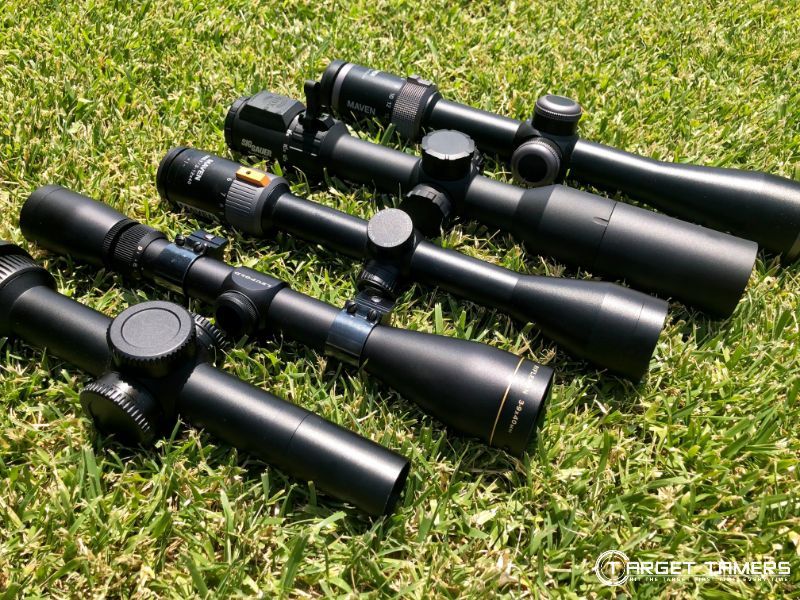
The rule was common knowledge when the 3-9x was a new configuration. It provided a baseline of always being able to see the target as if it were 100 feet away. A deer at 300 yards (900 feet) at 9x magnification would appear to be 100 feet away through the FOV.
Whether it’s hunting, tactical missions, or benchrest shooting, the application will dictate the equipment needed. I.e., the magnification ranges should fit the needs of what the shooter is doing 90% of the time. With that, you can usually use what you have to serve secondary applications as well.
Outlined in this guide are common distances, applications, and scope considerations related to magnification.
Rifle Scope Magnifications Distance Chart
While everyone’s circumstances are unique, below is a scope magnifications distance chart to provide an idea of popular and common power ranges used for typical applications within customary distances.
| Applications | Scope Magnifications | Lowest Power | Highest Power | Distances (Yards) |
|---|---|---|---|---|
| Big Game Hunting | 6x, 2-7x, 2.5-10x, 3-9x, 3-18x, 4-12x, 4-16x | 2x | 14 | 50+ |
| Predator Hunting | 4x, 1-8x, 2-12x | 2x | 14x | 50+ |
| Dangerous Game Hunting | 1x, 2.5x, 1-4x, 1.5-5x | 1x | 5x | 50-150 |
| Rimfire Small Game Hunting | 4x, 2.5-10x, 3-9x | 2x | 9x | 100 |
| F-Class, PRS Competition | 3-18x, 5-25x, 6-20x, 6-24x, 7-35x | 3x | 42x | 1000+ |
| Long-Range Shooting | 10x, 4-16x, 4.5-27x, 6-24x | 4x | N/A | 1000+ |
| Mid-Range Shooting w/AR | 1-8x, 1-10x, 2-10x | 1x | 12x | Up to 800 |
| Small Game Long Range | 10x, 12x, 5-25x, 6-18x, 6-24x | 4x | 32x | 700 |
Many other factors will come into play such as vision health, terrain, conditions, mirage, target size, scope weight, rifle caliber, etc. The above recommendations are very general distances, and magnification preferences are not intended to be all-inclusive.
Best Rifle Scope Magnifications for 50 Yards
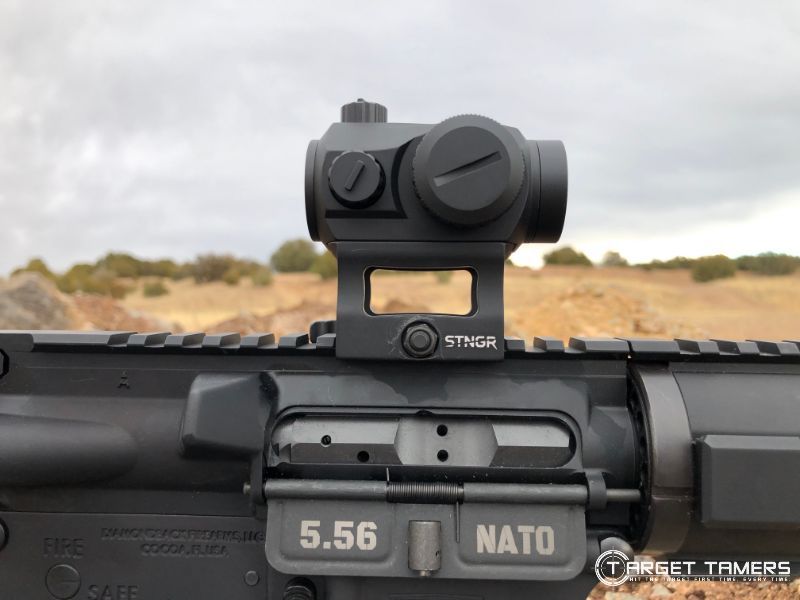
Generally, those who are shooting to 50 yards are using rimfire calibers such as .17 HMR and the .22 LR for target shooting fun and field work. Magnifications between 2x to 9x will do the job well for inside 100 yards and seeing holes on paper.
Red dot sights and LPVO scopes of 1-4x are designed for CQB and close-range engagements suited to 0–100-yard shooting. Many air gun scopes come factory-set for parallax at 50, 75, and 100 yards.
For various types of competition, high magnification is more appropriate for something like 50-yard rimfire shooting. 24x seems to be a favorite power range of rimfire scopes although preferences can run as high 32x.
Recommended Scopes:
Best Rifle Scope Magnifications for 100 Yards
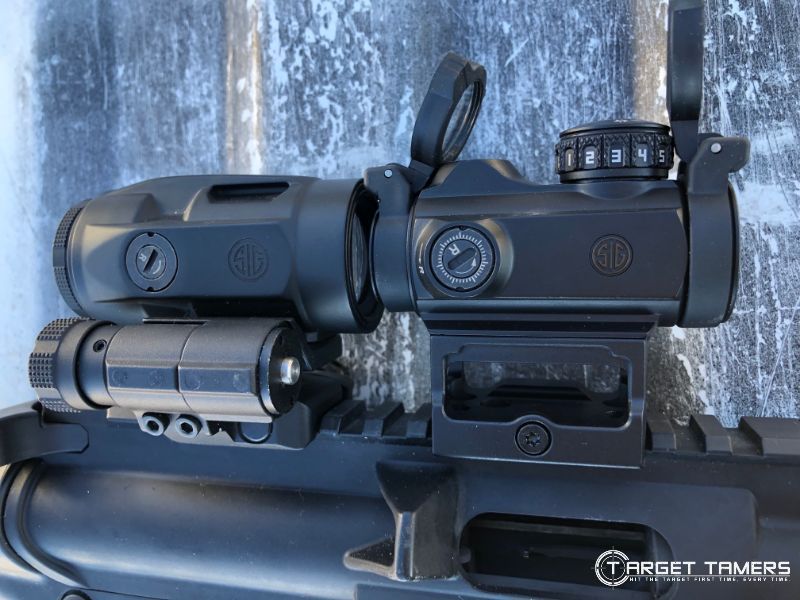
Based on the 1x magnification for every 100 feet principle, you could do well with 3x magnification. Many scopes that have less than 10x magnification are factory-set for parallax at 100 yards. Scopes for this distance can be used for precision shooting, 100-yard benchrest matches, and hunting.
Technically, getting on steel can be easily done with a red dot sight and 3x magnifier. To see holes on paper or to see the target better, more power is a must-have. The 3-9x, 4-12x, and 4-16x ranges are general-purpose configurations that serve well for 100-yard shooting.
CQB and tactical LE applications inside 100 yards will benefit from an LPVO with magnification from 1x and maxing out at 10x on the high end for rare long-range shots or target identification.
Recommended Scopes:
Best Rifle Scope Magnifications for 200 Yards
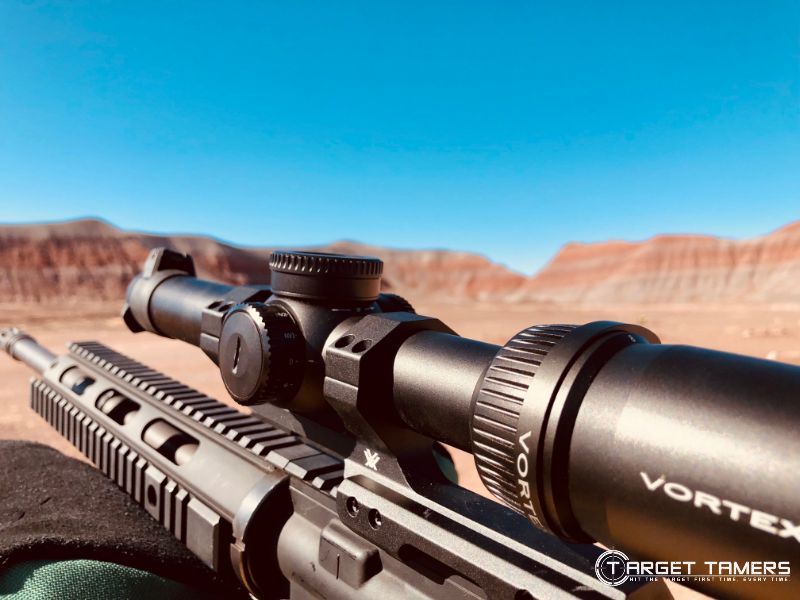
Like 100-yard scopes, rifle sight scope magnifications for 200 yards will be low power and likely used for target shooting, hunting rifle, or close-range engagements for home defense or LE applications. Fast target acquisition and having wide field of views are vital factors to consider.
A great scope configuration is 2-7x with a 32mm objective lens that performs well for lowlight conditions and is a lightweight addition to a rifle setup. CQB and close-range field work will benefit from low power, and LPVO options like 1-8x are well-suited to this distance.
Target range shooting, seeing holes on paper, and hunting scope inside 200 yards will be paired well with general-purpose configurations of 3-9x, 4-12x, and 4-16x.
Recommended Scopes:
Best Rifle Scope Magnification for 500 Yards
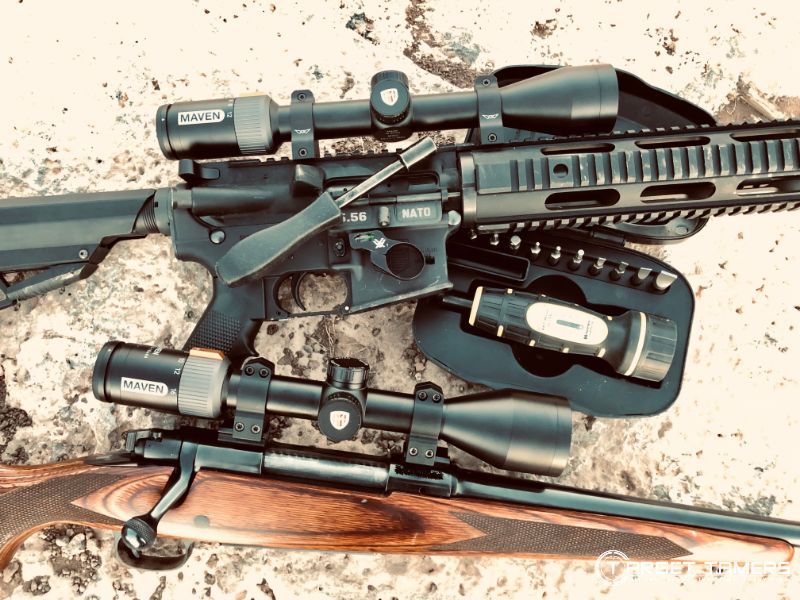
Shooting 500-yard distances is considered long range, and most modern rifle scopes are equipped to provide magnification and reticles for 500 yards and beyond. On a scope for inside 500 yards, minimum magnification is likely to be around 4-5x and 10-15x on the high end for marksmen.
Per the 100-foot rule of thumb mentioned above, you’d need approximately 15x magnification to make practical shots. If targets are quite small like prairie dogs, more magnification like that of 24x, 32x and more will be needed. For competitions, having high power is typically mandatory but many sit between 12-18x magnification.
Other considerations such as target size, wind, reticle type, turret travel, and optical quality must be considered.
Recommended Scopes:
Best Rifle Scope Magnification for 800 Yards
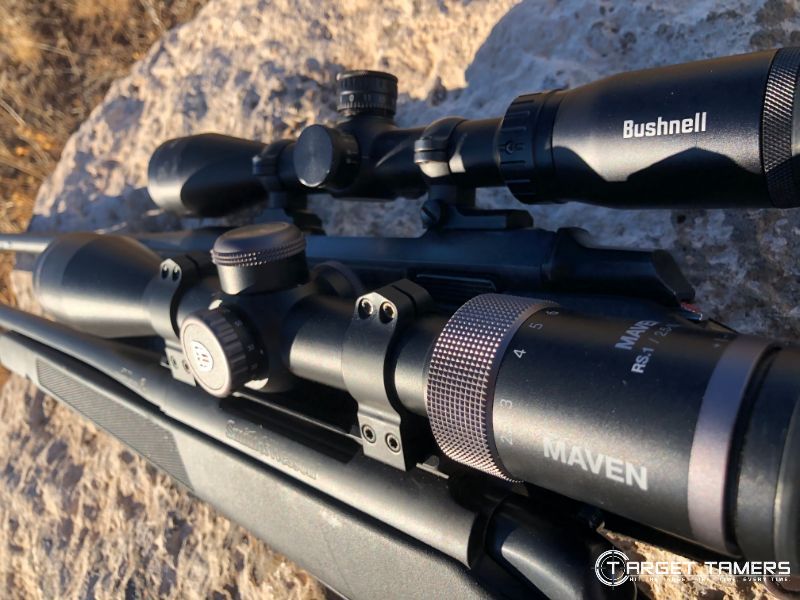
The best scope magnification for 600-800 yards looks a lot like scopes made for long-range work. Many long-range hunters will look for magnification that can get them out to 800 yards but may stick to shots inside 600. For matches, competitors don’t crank up the power as much as you may think.
A general rule is that if you’re in the 4-16x to 6-25x side of things, you’ll have the power to reach out and make those long-range shots. Of course, 27x and higher magnification will work well for small game at great distances.
Competitor shooters don’t touch the power ring as much as you may imagine. The advantages of staying under 18x allows for increased brightness, resolving power, and field of views that can be compatible for PRS matches. But having the capability of much higher power (even if you don’t use it) can mean having optical quality that doesn’t crank out at the pet power range you like to sit in.
For eyes that need more help or better seeing on targets, 24x would be a suitable benchmark magnification for 600-800 yards.
Recommended Scopes:
Best Rifle Scope Magnification for 1000 Yards
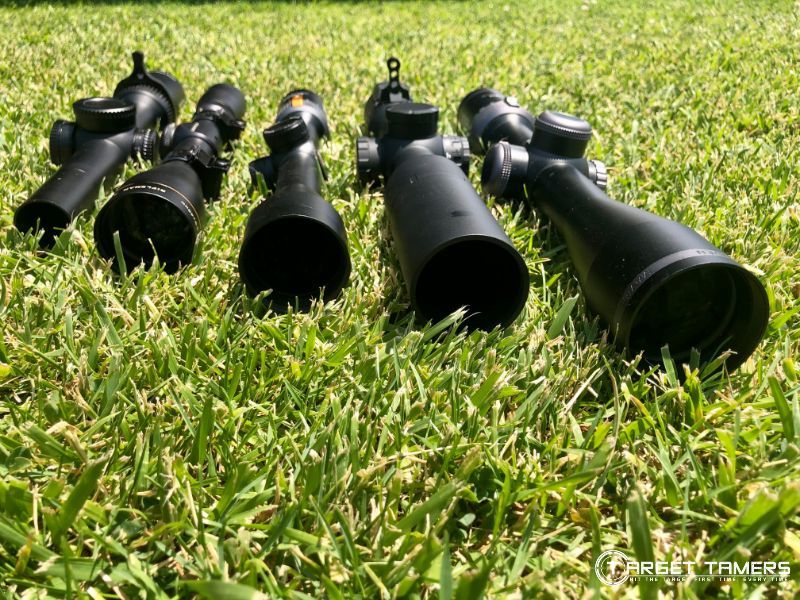
Scope magnification for long range shooting whether it’s at the bench or for extreme long-range hunting demands scope quality. At 1000 yards and beyond, the best advice is to always buy the best of what you can afford. While high magnification is paramount, glass quality is even more so.
You’re looking at 30x magnification based on the 1x magnification per every 100 feet rule. High power could be very desirable for various types of long-range applications such as 1000-yard F-class matches.
Modifying the rule to 1x magnification for every 100 yards is also acceptable for the 1000-yard mark. Yes, you can make a 1000-yard shot with 10x magnification, and the U.S. Marine Corp did so with fixed 10x successfully for many years.
Nowadays, more shooters will prefer to increase that magnification somewhere between the 14x-20x range to also improve target visibility and identification. Because too much magnification has its drawbacks, optical quality has a larger role in being able to make those shots count at great distances versus magnification alone.
Recommended Scopes:
Best Rifle Scope Magnification for Deer Hunting
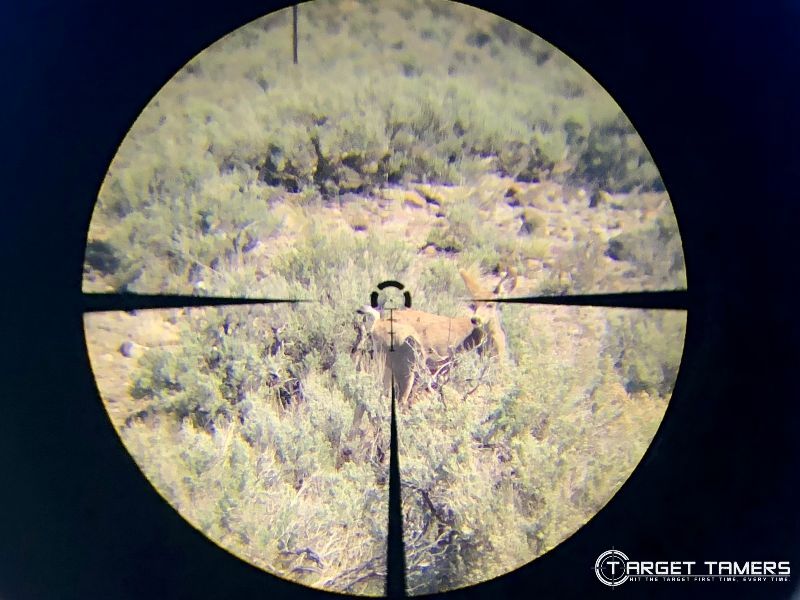
Not long ago, the generic answer was either a 4x fixed or 3-9x as the best power range for deer rifle hunting. They have done well for many a deer hunter but with advances in scope innovation, the best scope magnification for elk hunting and mule deer continues to evolve.
The 3-9x still remains a classic for deer especially in the Midwest or Eastern woods. The 2.5-10x would be great for many that are in timber, treestands, and where shots are regularly taken under 200 yards.
For shots that are longer, the 4-12x, and 4-16x are also hunting favorites and are plenty enough for whitetails, mule deer, and elk.
Recommended Scopes:
Best Rifle Scope Magnification for Backcountry Hunting
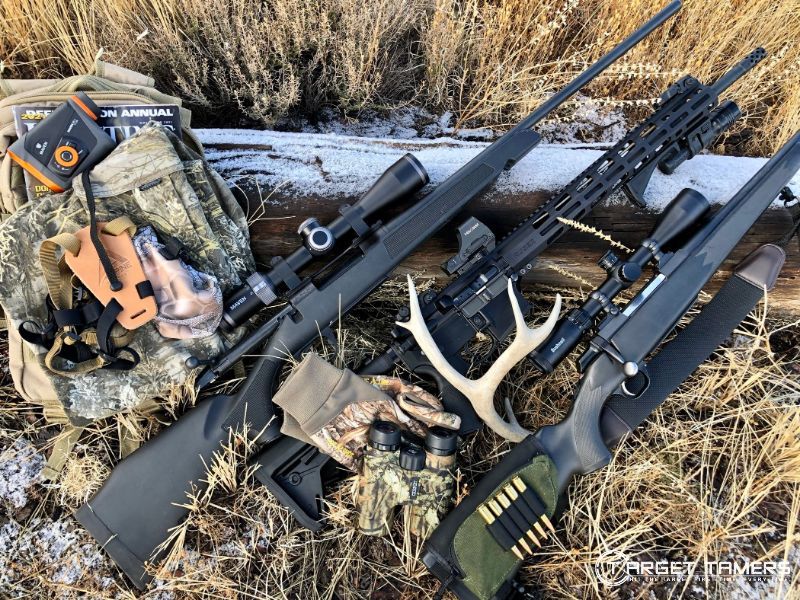
Backcountry hunting is pure adventure and choice of rifle and optics can make or break the experience. Since magnification can add weight and size to a rifle, a balancing act is required. Preferably it should be on the light side but also with decent power to make long-range shots.
The best scope magnification for open country, backcountry, and some double-duty long-range stuff is the 3-15x and 4-16x. The 6-24x is a high-power option but is on the heavier and larger end of the size spectrum.
Other scope features must be considered such as having an exposed turret with zero stop to dial in and a side focus or adjustable objective for parallax adjustment. Quality glass will make up for what magnification can’t do, and in high country, lowlight performance and a wide field of view will also be a necessity.
Additionally, you should have rangefinder binoculars or a lightweight spotting scope to do the heavy lifting of glassing and scanning.
Recommended Scopes:
Best Rifle Scope Magnification for Target Shooting
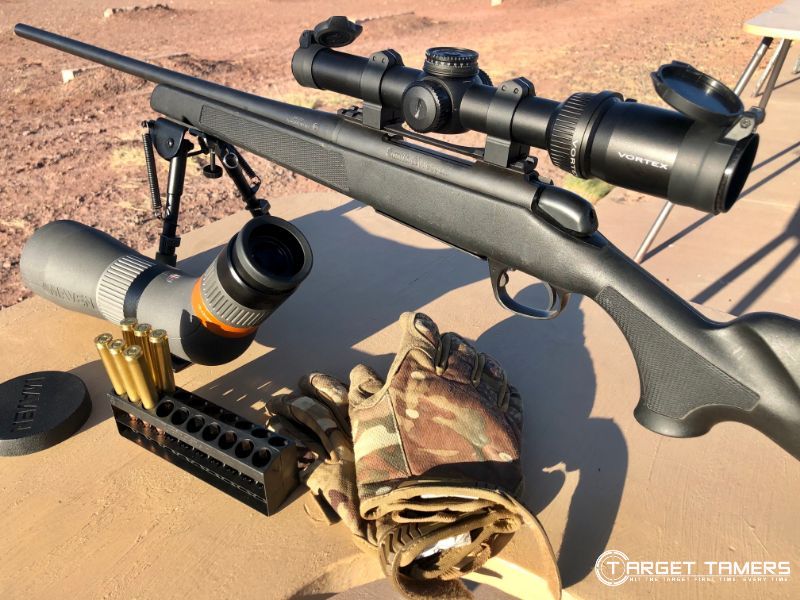
Target shooting for fun or practice at the range is usually done inside 100 yards but can extend out to a few hundred yards. More than that can be considered long range. At these distances, it’s all about personal preference and what you’re trying to achieve.
It’s highly likely that you’re at a bench and you have all day long to shoot off the center point to stationary targets at known distances. Less of a concern at the range is target identification, FOV, wind, etc. You already know what the target is, you can wait for a lull in the wind, and you’re shooting during daylight hours and not struggling with twilight conditions.
While high power is tempting in order to see the target better, it can make your groups worse as your eyes strain when trying to compensate for minute body twitches and movement that is more apparent with high magnification.
4-6x magnification is great for inside 300 yards with manageable, stationary target sizes that and with you shooting from a stationary position. With quality glass, you can sit behind the eyepiece for long periods of time to make the most of range day. At these lower powers, you’re also not fighting with an unforgiving eye box.
However, if you’re shooting .22 bench rest targets, if you have older eyes, or are shooting longer distances, more magnification is necessary. You may be using your scope to substitute as a spotter to see groupings down range.
Define the purpose and goals of your target shooting ambitions and allow that to determine the perfect magnification range and characteristics of your scope.
Recommended Scopes:
Best Rifle Scope Magnification for AR 10
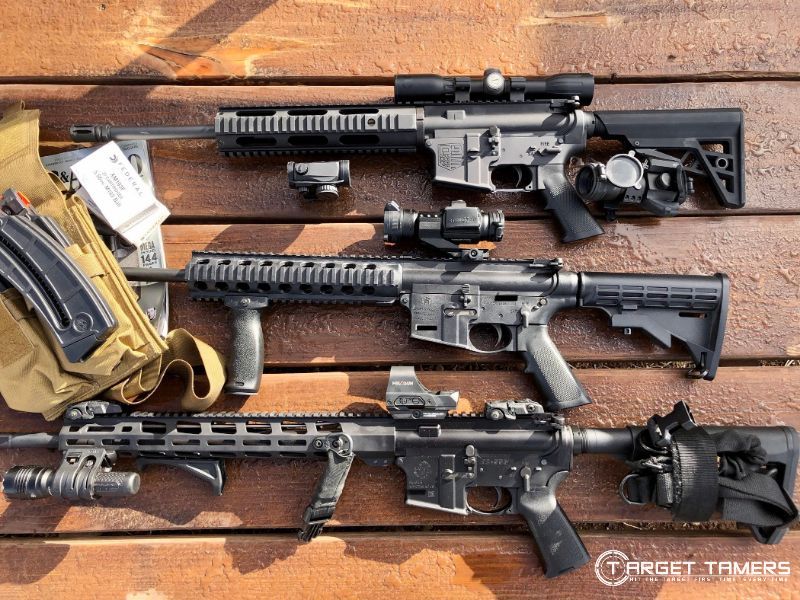
Everything from AR-15 red dot sights to long-range scopes can be mounted to an AR/MSR style rifle. Like everything else, application determines the magnification.
Those who are punching holes inside 300 yards don’t need much magnification. LPVO scopes for the AR-10 are becoming quite popular for tactical carbines and their 1-4x, 1-6x, and 1-8x configurations are excellent for short-range work and longer engagements when necessary.
For mid-range shooting between 300-500 yards or even up to 800 yards, you can do great with 2-10x and 4-12x variable power scopes. Opt for more with the 5-20x if your targets are small and you’re aiming for precision at those longer distances.
Shooting past 500 yards and even beyond 1000, a long-range scope that hits the high 24x, 25x, and 32x magnifications will provide plenty of seeing. These are popular max magnifications for long-range competition although many may not ever crank it past 20x.
Recommended Scopes:
Can You Have Too Much Magnification?
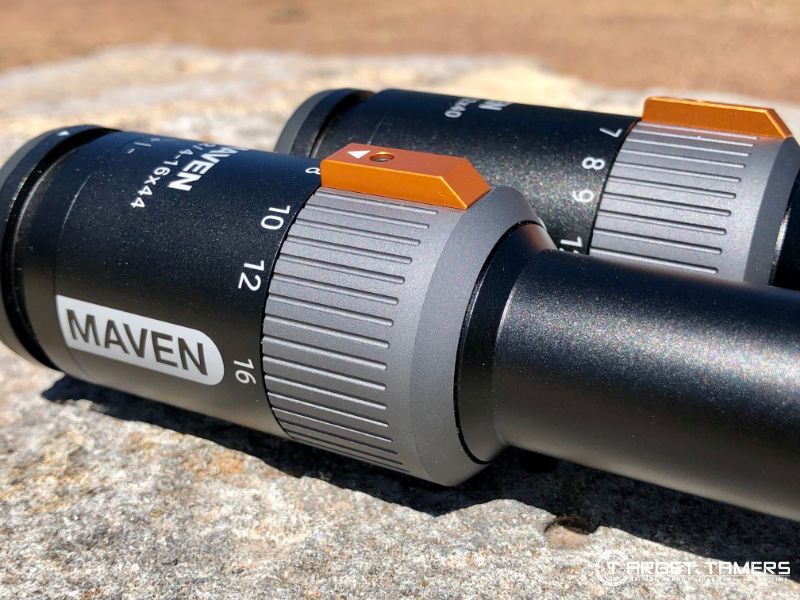
The tendency among new shooters is to go overkill with magnification. How much is too much? Although high magnification improves target visibility and identification, it decreases brightness, resolution, field of view, and eye relief. Too much magnification can be a detriment.
When shooting any distance, opting for reasonable magnification but higher optical quality is the recommendation. Clear glass provides the best of both worlds in having usable power ranges but is able to maintain bright, resolvable details at great distances.
Following are some common issues related to having too much power.
Increases in Errors
High scope magnification not only makes a target look closer and larger, but it also magnifies your likelihood for errors. Shooting position, setup instability, unaddressed parallax issues and more will make issues more obvious.
This can help to address some scope defects or bad habits that you may have. You can then take the steps necessary to either improve your equipment and/or techniques to make accurate shots with high magnification.
Mirage & Wind
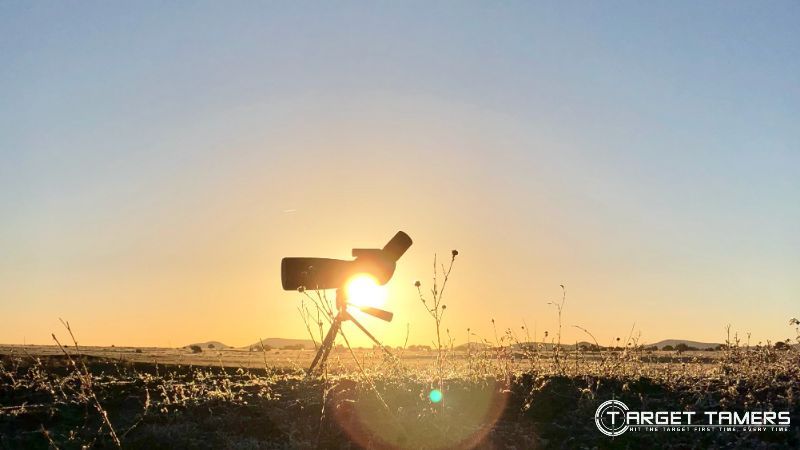
Cranking up power to see mirage can actually help skilled marksmen improve their accuracy. They increase magnification to see the story of what mirage is telling them about wind. With this knowledge, they then decrease magnification to improve visibility and make appropriate turret adjustments to get on target. Too much power and mirage becomes too distracting.
In extreme cases like this, a spotting scope may prove to be a beneficial tool. To see more on this topic, sweep on by our How to Read Mirage & Estimate Wind Speed guide.
Size/Weight
As scope configurations offer higher magnification and bigger objective bells, consequently the scope gets larger and heavier in size. This affects overall equipment weight, how the scope is mounted, and its mounting profile.
Larger and heavier setups are less of a consequence if that rifle is primarily on some sort of stable platform like on a rest at the bench or used with a bipod. But for the hunter who has country to travel, he’ll be in far better condition if he has a lightweight setup.
Expensive
More magnification tends to be more expensive and is assumed to be used for some sort of long-range work. Not only are you acquiring more magnification than the average scope, but your needs will demand quality glass, more turret travel, or a reticle design that can provide long-range holdovers.
If the budget isn’t available for a quality high power scope, anticipate that you won’t be able to use the max end of the power range with a cheaper alternative. At the end of the day, magnification means nothing without resolution.
See Best Rifle Scopes for the Money categories to get an idea on forming a budget.
Other Rifle Scope Considerations
Choosing a riflescope solely on magnification is a mistake. Other Rifle sight scope considerations such as FOV, reticle type, parallax correction, and glass must be assessed in order to make the most of magnification.
Field of View (FOV)
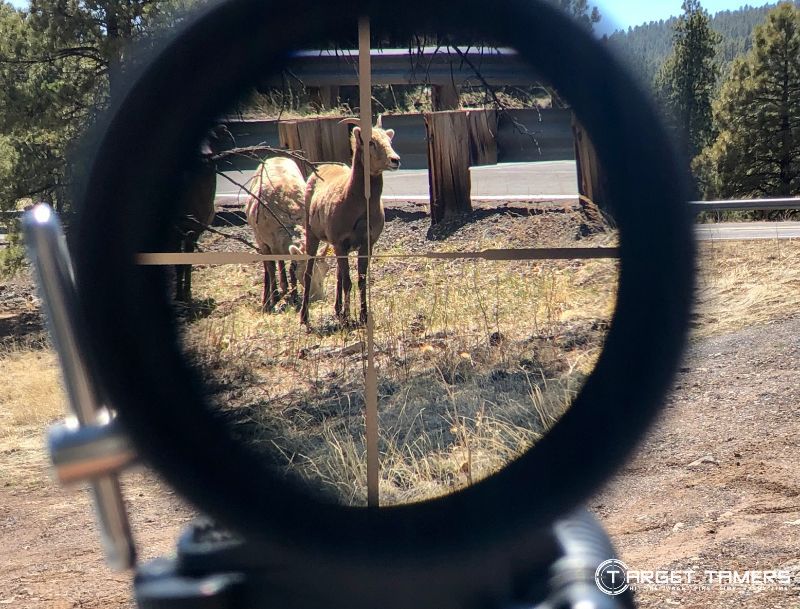
As magnification increases, FOV narrows. This can be a good thing to aid in homing in on a target, but more often than not, a restricted FOV causes problems for the shooter. In competition use like PRS matches, a narrow FOV inhibits fast target acquisition when engaging targets at various distances.
In the field, high magnification and a narrow FOV can magnify instability problems. It can also decrease lowlight performance and can be disorienting in certain terrains such as thick timber. Finding a balance between reasonable magnification and ample FOV must be considered.
View our What is Field of View guide for a refresher on the topic.
FFP VS SFP
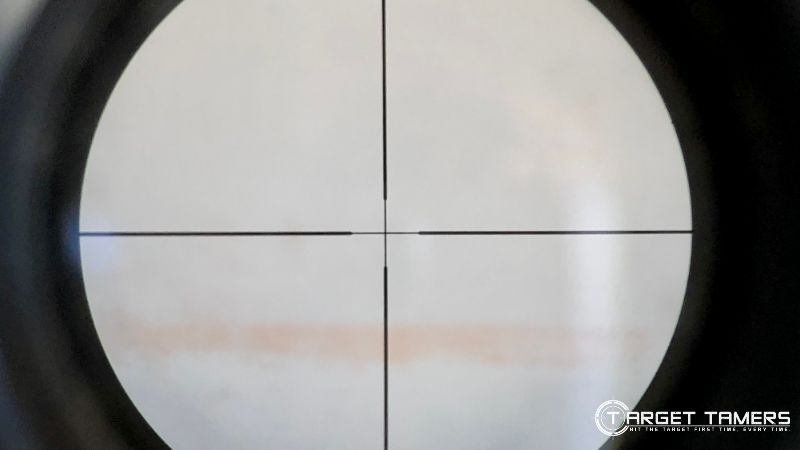
The focal plane of the reticle is an important scope feature to consider as it determines how the reticle will behave in relation to magnification. A FFP reticle will change in size as magnification is manipulated whereas a SFP reticle will remain the same. It can affect various things like subtension, reticle visibility, and magnification.
FFP scopes are great for long-range, high magnifications, and competition use. SFP reticles are well suited to hunting, low magnifications, and small game/varmint hunting.
For more information on how to choose between them, our FFP VS SFP guide will help narrow it down.
Parallax
Parallax is more noticeable when you increase magnification. It usually presents itself as a floating or moving reticle that doesn’t stay on point. While related to distance and the image having been formed off-axis of the focal plane, high magnification makes it more apparent to the eye.
To aid in focusing the image with the distance and correcting for parallax, a scope with a side focus (SF) or adjustable objective (AO) is in order. These are usually seen on rifle scopes with more than 10x magnification.
Our guide on Parallax and tips to correct for it can get you up to speed.
Optical Quality/Glass
No amount of magnification can make up for poor optical quality. It’s always the better option to compromise with low magnification and acquire high glass quality for clear, bright, and resolvable images.
Of course, better glass means a more expensive scope. Better glass plus high magnification means an even more expensive scope. Budget will be a prominent factor, so the age-old wisdom of “buy the best of what you can afford” remains true.
Folks with aging eyes may prefer high magnification to see the target or the reticle better – perhaps both. However, cranking up magnification with poor glass only magnifies distortions. Focus on acquiring quality glass over magnification. If you’re considering acquiring more magnification due to old eyes, read our Optics for Poor Vision guide to get informed on other considerations.
Magnification can only deliver so much as the glass is able to provide. Expecting high quality magnification results out of a low-cost variable scopes can set you up for disappointment.
How Much Scope Magnification do I Need?
From one shooter to the next, everyone has their own magnification preferences for one thing or the other. Magnification needs are determined by the task or applications that will be undertaken.
Regardless of the amount of power the scope has, be sure that it has the optical quality to provide clear and resolvable views throughout the entire magnification range.
While high magnification tends to get a lot of the attention, don’t forget that low power also matters. If you opt for a quality scope that has versatile magnification, say 2x to 18x, you’ll have a scope that can be used for other applications too.
Further Reading


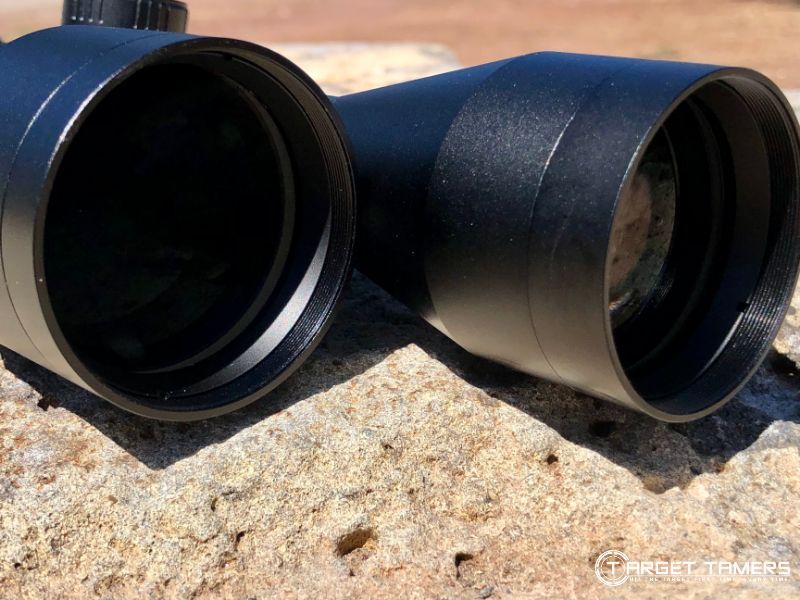
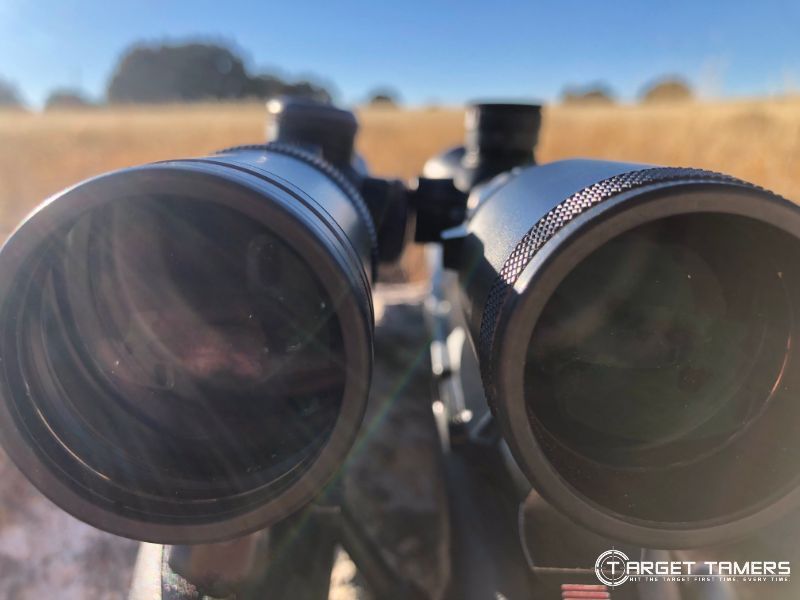
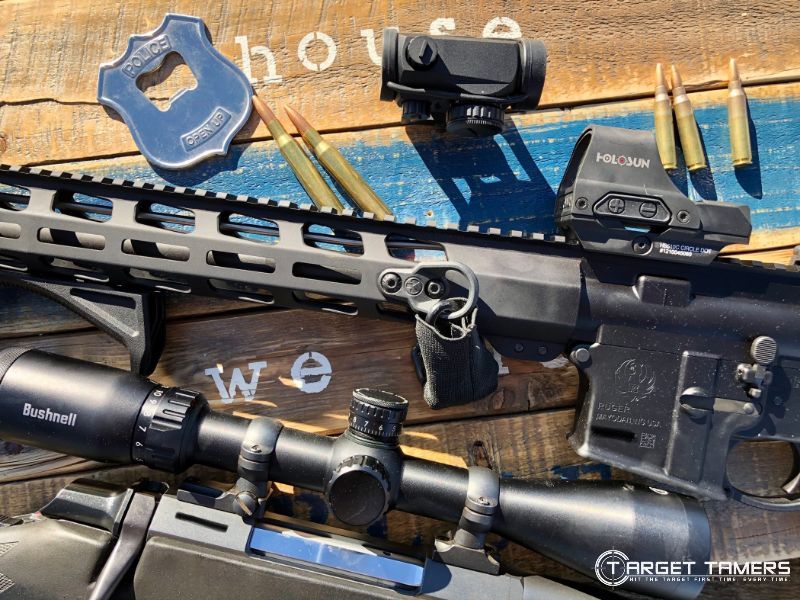



GREAT. ADVICE